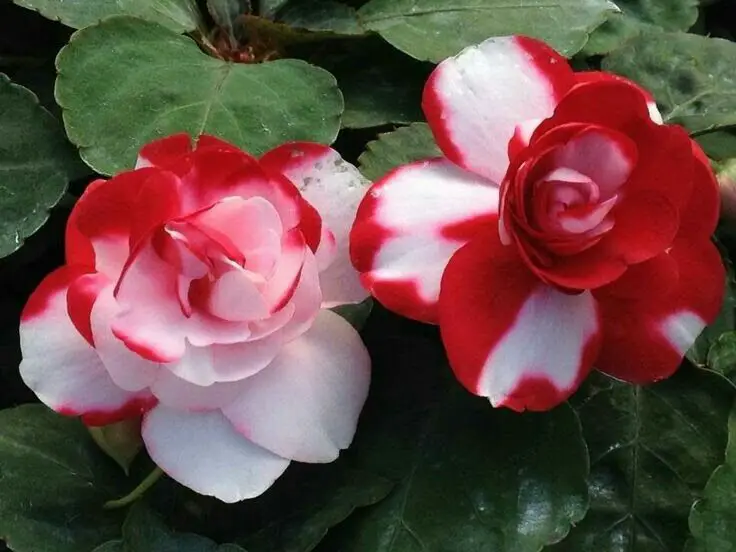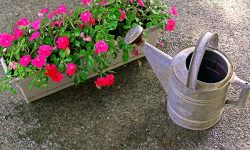Impatiens are beloved for their vibrant blooms and ability to brighten shaded garden areas. These flowers offer color all season long and thrive in both containers and garden beds. Gardeners often wonder how long impatiens last and what practices ensure their longevity. Understanding the plant’s growth habits, preferred conditions, and care requirements can help maintain lush, healthy blooms for months. With proper attention, impatiens can provide continuous color throughout the growing season.
Longevity depends on multiple factors, including climate, watering, soil quality, and sunlight exposure. Seasonal changes and disease management also affect bloom duration. By learning expert strategies for planting, fertilizing, and protecting these flowers, gardeners can maximize flowering time. Regular maintenance, such as deadheading and pest control, further supports vibrant growth. This guide will explore all aspects of caring for impatiens to help them thrive and deliver extended garden color year after year.
Understanding Impatiens Lifespan

Impatiens are known for their bright, continuous blooms, but their lifespan can vary depending on growing conditions and care practices. In general, impatiens are tender annuals, completing their life cycle in a single growing season. In warmer climates without frost, some impatiens may survive longer and continue blooming for several months. However, in cooler regions, frost or freezing temperatures typically end their flowering period. Gardeners who understand the factors affecting impatiens lifespan can take steps to extend bloom duration and maintain a vibrant garden display.
Environmental conditions play a significant role in how long impatiens last. Adequate shade is crucial, as these plants prefer indirect sunlight and can suffer if exposed to harsh afternoon sun. Consistent moisture is also vital; impatiens thrive in well-draining soil that retains some moisture without becoming waterlogged. Overly dry or saturated soil can reduce flower longevity, causing stems to weaken and blooms to fade prematurely. Temperature fluctuations, humidity levels, and airflow around the plants also influence overall health and lifespan.
Plant care practices directly impact the longevity of impatiens. Regular feeding with a balanced fertilizer provides essential nutrients that support continuous flowering. Deadheading spent blooms encourages new flowers and prevents energy from being diverted to seed production. Protecting plants from pests and diseases ensures that foliage and stems remain healthy, supporting longer-lasting blooms. With attention to planting location, soil quality, watering habits, and routine maintenance, gardeners can enjoy impatiens for the entire growing season, achieving a colorful and enduring garden display.
Choosing the Right Impatiens Varieties for Longevity
Selecting the right impatiens variety is crucial for achieving a long-lasting and vibrant garden display. Different cultivars vary in bloom duration, plant vigor, and resistance to disease. Traditional garden impatiens, known as Impatiens walleriana, offer bright colors and reliable growth in shaded areas, but they can be susceptible to downy mildew, which shortens their lifespan. On the other hand, newer hybrid varieties like SunPatiens or Beacon Impatiens provide extended blooming periods and improved disease resistance, making them ideal for gardeners seeking longer-lasting color.
SunPatiens, for instance, tolerate partial sun and heat better than traditional varieties, allowing blooms to persist even under more challenging conditions. These hybrids are robust, with strong stems and abundant flower production, ensuring a continuous display throughout the growing season. Selecting disease-resistant varieties reduces the risk of premature plant decline and allows gardeners to maintain healthy, vigorous plants for months. By choosing varieties suited to specific environmental conditions, gardeners can maximize the lifespan and aesthetic appeal of their impatiens.
In addition to disease resistance, bloom duration and growth habit should influence variety selection. Some impatiens produce compact growth suitable for containers, while others grow taller and spread widely, covering larger garden areas. Compact varieties may require less maintenance and are ideal for confined spaces, whereas taller varieties can provide striking color in flower beds. Considering the intended location, sunlight exposure, and water availability helps determine the most appropriate variety. By thoughtfully selecting impatiens, gardeners can enjoy extended blooming periods, robust plants, and vibrant color from early spring through fall.
Planting Impatiens for Maximum Bloom Duration
Proper planting is essential to ensure impatiens thrive and produce blooms for as long as possible. Choosing the right location is the first step. Impatiens prefer partial to full shade, as direct sunlight can scorch leaves and reduce flower longevity. Gardeners should avoid areas with harsh afternoon sun or strong winds, which can stress plants and cause premature bloom decline. Well-draining soil enriched with organic matter provides a stable environment for roots, supporting vigorous growth and extended flowering periods. Healthy soil retains moisture without becoming waterlogged, ensuring roots have consistent access to nutrients while preventing rot.
Spacing is another key factor when planting impatiens. Crowded plants compete for water, nutrients, and light, which can weaken stems and shorten bloom duration. Maintaining adequate spacing allows air circulation, reducing humidity-related disease risks such as downy mildew. Gardeners should dig holes slightly larger than the root ball and plant at the same depth as in the nursery container. Firm soil gently around the roots and water immediately to help plants establish quickly and recover from transplanting shock. Proper spacing also allows gardeners to monitor plants for pests and diseases more effectively, which supports continuous flowering.
Timing also impacts bloom longevity. Planting impatiens after the last frost ensures young plants are not damaged by cold, allowing them to grow and flower fully. In regions with long growing seasons, staggering planting intervals can maintain continuous color in the garden. Mulching around the plants helps retain soil moisture, regulate temperature, and suppress weeds, further extending bloom periods. By combining correct location, proper spacing, soil preparation, and strategic timing, gardeners can maximize the flowering period of impatiens, achieving lush, vibrant displays that brighten garden beds and containers throughout the growing season.
Watering and Moisture Strategies to Extend Blooming
Proper watering is crucial for extending the blooming period of impatiens. These plants thrive in consistently moist soil but are sensitive to overwatering, which can lead to root rot and reduced flower production. Watering deeply and evenly ensures that roots receive adequate moisture without saturating the soil. Gardeners should check soil regularly, allowing the top inch to dry slightly between waterings. Maintaining this balance supports strong stems, healthy foliage, and continuous flower formation throughout the season.
Mulching around impatiens further helps retain soil moisture and prolong flowering. Organic mulches, such as shredded bark or compost, regulate soil temperature, reduce evaporation, and prevent rapid drying during hot days. Mulch also suppresses weeds, which compete with impatiens for water and nutrients. By protecting the roots and conserving moisture, mulching allows the plant to maintain steady growth and produce flowers consistently for months. Combining mulch with proper watering techniques ensures that impatiens remain vibrant and bloom continuously.
Timing of watering impacts flower longevity as well. Early morning watering is ideal, allowing foliage to dry during the day and reducing the risk of fungal disease. During hot or dry periods, increasing the frequency or amount of water helps prevent stress, which can cause flowers to wilt and drop prematurely. Shaded areas may require less frequent watering, while containers dry out faster and need closer monitoring. By adjusting watering practices to environmental conditions, gardeners can maximize bloom duration. Consistent moisture management, along with fertilization and pruning, ensures impatiens deliver long-lasting color and an extended flowering season.
Fertilizing Impatiens to Prolong Blooming
Fertilizing impatiens strategically can directly extend their flowering period. These plants require a steady supply of nutrients to maintain continuous bloom production. Using a balanced, water-soluble fertilizer every two weeks encourages new flower buds while supporting healthy foliage. Nutrients like phosphorus and potassium are particularly important for stimulating flower development and sustaining blooms over an extended period. Regular feeding ensures the plant has sufficient energy to produce vibrant flowers throughout the season.
Slow-release fertilizers also play a key role in prolonging blooms. Applying granular fertilizer at planting and supplementing mid-season provides a steady nutrient source, preventing the plant from entering a low-energy phase that can reduce flowering. Gardeners must avoid over-fertilizing, which may lead to excessive leaf growth at the expense of flowers. Combining proper fertilization with consistent watering allows nutrients to reach roots effectively, supporting strong stems and continuous flower formation.
Fertilizer timing and type can help maintain peak bloom performance. Fertilizing just before new buds form encourages successive flowering, while consistent nutrient availability prevents flower drop during heat or stress periods. By integrating proper feeding into a comprehensive care routine—including pruning, deadheading, and disease prevention—gardeners can extend the flowering season significantly. Thoughtful fertilization ensures impatiens remain colorful and abundant, providing a long-lasting, visually striking display that brightens shaded garden beds and containers for months.
Pruning and Deadheading Impatiens for Extended Flowering
Pruning and deadheading impatiens are essential techniques to extend their flowering season. Removing spent blooms prevents the plant from diverting energy into seed production, redirecting nutrients to new bud development. Regular deadheading encourages successive waves of flowers, ensuring continuous color in garden beds and containers. Checking plants every few days allows gardeners to remove faded blooms promptly, maximizing bloom duration and overall plant vigor. Failing to remove old flowers can lead to fewer blooms and an untidy appearance, which diminishes the visual impact of the planting.
Pruning also plays a key role in prolonging flowering. Cutting back leggy or overgrown stems stimulates lateral growth, producing more flowering sites. Maintaining a compact, bushy structure helps light and air reach inner branches, reducing stress and disease risk. Removing weak or damaged stems ensures the plant focuses energy on healthy growth and flower production. Proper pruning not only promotes more blooms but also improves plant health, allowing the impatiens to recover quickly and produce new flowers. Timing pruning strategically, such as after a flush of blooms, ensures a steady succession of flowers throughout the season.
Integrating these practices with proper watering, fertilization, and pest control enhances the effect on bloom longevity. Healthy, well-maintained impatiens respond quickly to care, producing abundant, colorful flowers throughout the season. Strategic pruning and deadheading, rather than general maintenance, directly support extended flowering. Gardeners who consistently apply these techniques enjoy longer-lasting displays, vibrant color, and more continuous bloom cycles, ensuring impatiens provide months of beauty and enjoyment in shaded areas, containers, and garden beds. This approach maximizes the seasonal color and keeps plants looking their best from early spring to fall.
Preventing Pests and Diseases to Maintain Continuous Blooms
Identifying Common Pests Early
Impatiens are susceptible to pests such as aphids, spider mites, and whiteflies, which can weaken plants and shorten bloom duration. Early identification is critical to maintaining continuous flowering. Regularly inspect the undersides of leaves and stems for tiny insects or damage. Aphids can cause curling or yellowing of leaves, while spider mites produce fine webbing and small specks on foliage. Whiteflies may appear as tiny white insects flying around when disturbed. Catching infestations early prevents severe damage and ensures plants continue to produce flowers.
Gardeners can use gentle treatments, such as insecticidal soap or neem oil, to control minor infestations without harming beneficial insects. Introducing natural predators like ladybugs or lacewings helps manage pest populations organically. Maintaining plant health through proper watering, fertilization, and pruning reduces susceptibility, as strong plants can better withstand pest attacks. Regularly rotating inspection routines and monitoring even healthy-looking plants ensures early detection of hidden pests. By staying vigilant and acting quickly, gardeners can protect impatiens from stress caused by insects, ensuring blooms remain vibrant and long-lasting throughout the growing season.
Managing Diseases for Extended Flowering
Impatiens are also prone to fungal and bacterial diseases, such as downy mildew and leaf spot, which can severely reduce flowering. These diseases thrive in damp, poorly ventilated conditions. Ensuring proper spacing between plants improves airflow, reducing humidity around leaves and preventing pathogen growth. Removing infected leaves promptly helps stop the spread to healthy parts of the plant, preserving bloom production.
Sterilizing tools before pruning or deadheading prevents transferring pathogens between plants. Watering at the base rather than overhead keeps foliage dry and reduces fungal risks. Choosing disease-resistant varieties, such as New Guinea impatiens or SunPatiens, further extends bloom duration. Crop rotation, avoiding planting impatiens in the same soil year after year, minimizes soil-borne pathogens. Combining vigilance, cultural practices, and resistant cultivars helps gardeners maintain healthy impatiens with prolonged flowering, ensuring colorful displays that last from spring through fall. Regular observation, prompt action, and preventive care are essential for sustaining long-lasting blooms.
Succession Planting for Continuous Blooms
Succession planting is an effective technique to ensure impatiens bloom continuously throughout the season. Instead of planting all flowers at once, gardeners stagger planting times every two to three weeks. This approach guarantees that as older plants begin to fade, younger ones take their place, maintaining uninterrupted color. It is particularly useful in garden beds and containers where visual impact is a priority, allowing a steady display of vibrant flowers from spring through fall.
Planning succession planting requires understanding the growth cycle of different impatiens varieties. Fast-growing types can be planted later to replace earlier bloomers, while heat-tolerant varieties thrive during warmer months. Container planting allows for easier control of soil, watering, and fertilization, ensuring each batch of plants receives optimal care. Gardeners can also combine varieties with varying bloom times to create overlapping flowering periods, making the garden appear continuously lively without significant gaps in color.
Succession planting works best when combined with proper maintenance practices. Regular deadheading and pruning of older plants encourage further blooms, while consistent watering and fertilization support vigorous growth. Observing plant health and promptly addressing pests or diseases ensures that each new group of impatiens reaches its full flowering potential. By carefully planning planting schedules and integrating care routines, gardeners can enjoy an extended flowering season. This method provides long-lasting beauty, keeps garden beds fresh, and maximizes the visual impact of impatiens throughout the entire growing period.
Using Mulch and Shade Techniques to Extend Blooming
Mulching is a highly effective method to prolong impatiens flowering by maintaining consistent soil moisture. Applying a layer of organic mulch, such as shredded bark, compost, or straw, helps regulate soil temperature and prevents rapid evaporation. This ensures that the roots remain cool and hydrated, allowing the plant to focus energy on producing new blooms rather than coping with stress. Mulch also suppresses weed growth, which competes for water and nutrients, further supporting strong flower development. Additionally, mulch gradually improves soil fertility as it decomposes, providing essential nutrients that enhance both growth and flowering.
Shade management complements mulching to maximize bloom longevity. Impatiens generally prefer partial shade, and protecting them from harsh afternoon sun reduces heat stress that can cause premature flower drop. Using shade cloth, planting under taller shrubs, or positioning containers in filtered light areas creates ideal conditions for prolonged flowering. Maintaining a balance of sunlight and shade helps plants sustain vibrant foliage and continuous blooms throughout hot periods. Observing the garden regularly allows gardeners to adjust shade as sunlight intensity changes over the season.
Combining mulch and proper shade techniques ensures impatiens thrive under varying environmental conditions. Regularly checking mulch depth, replacing decomposed material, and adjusting shade based on seasonal sun intensity enhances these benefits. Mulch and shade also reduce stress caused by rapid temperature fluctuations, protecting delicate flowers from wilting or discoloration. This approach minimizes plant stress, reduces disease risk, and maintains steady growth. Gardeners who integrate these practices with consistent watering, fertilization, and deadheading will enjoy impatiens that bloom longer, remain lush, and provide continuous, colorful displays from early spring to late fall. The synergy of mulch and shade creates an environment that supports both plant health and extended flowering, ensuring months of vibrant garden beauty.
Overwintering Impatiens
Overwintering impatiens allows gardeners to preserve healthy plants and enjoy earlier blooms the following season. In colder regions, impatiens are sensitive to frost, so protecting them before the first freeze is essential. Gardeners can either bring container-grown plants indoors or carefully dig up in-ground plants. When moving plants indoors, place them in bright, indirect sunlight and maintain temperatures between 55–65°F to prevent stress and encourage survival.
Preparation is key for successful overwintering. Trim back leggy stems and remove dead or diseased foliage to reduce the risk of mold and pests indoors. Repotting into fresh, well-draining soil improves nutrient availability and prevents root rot during the dormant period. Watering should be reduced but not completely stopped; the soil should remain slightly moist to maintain root health without promoting fungal growth.
Monitoring and care throughout winter ensure impatiens survive and resume growth in spring. Check plants regularly for signs of pests such as spider mites or mealybugs, which can proliferate indoors. As days lengthen and temperatures rise, gradually acclimate plants to outdoor conditions before replanting. By following these steps, gardeners can extend the life of their impatiens, achieve early flowering, and maintain vibrant displays year after year. Overwintering combines proper indoor care, careful monitoring, and gradual reintroduction to outdoor conditions for maximum success.
Seasonal Maintenance Tips
Maintaining impatiens throughout the growing season is essential for prolonged blooms and healthy growth. Early spring is the ideal time to prepare soil by incorporating compost or organic matter, ensuring proper drainage and nutrient availability. Planting in partial shade or filtered sunlight helps reduce stress from heat while promoting strong flower production. Consistent watering and early fertilization support root development and initial blooms.
During mid-season, regular monitoring is crucial. Remove spent flowers through deadheading to encourage continuous blooming and prevent energy diversion into seed production. Pruning leggy or overgrown stems stimulates lateral growth, increasing flower density. Inspect plants frequently for pests and diseases, and treat any problems promptly with safe, effective solutions. Adjust watering and shade based on temperature and rainfall to prevent stress-related flower drop or leaf damage.
As the season winds down, prepare impatiens for cooler temperatures and reduced sunlight. Gradually reduce fertilization while maintaining moderate watering to prevent sudden stress. In regions with frost, consider overwintering container plants or applying protective mulch for in-ground plants. Seasonal maintenance ensures impatiens remain vibrant, healthy, and flowering longer. By implementing care routines tailored to each growth stage, gardeners can enjoy extended color, lush foliage, and optimal plant health from spring through fall.
Common Mistakes to Avoid That Shorten Impatiens Blooming
Improper Watering
One of the most frequent mistakes gardeners make with impatiens is incorrect watering. These plants need consistently moist soil to thrive, but overwatering can lead to root rot and fungal diseases, while underwatering causes stress and premature flower drop. Both extremes shorten the blooming period and reduce overall plant vigor. Monitoring soil moisture and ensuring water reaches the root zone without saturating the soil is critical for maintaining long-lasting blooms.
Using well-draining soil helps balance moisture levels and prevent waterlogging. Watering at the base rather than overhead keeps foliage dry, reducing the risk of leaf diseases. Checking soil regularly and adjusting watering according to temperature, sun exposure, and container versus garden bed conditions ensures plants receive optimal hydration. Proper watering promotes strong stems, vibrant foliage, and continuous flower production, directly contributing to a prolonged flowering season. Gardeners who master watering practices can enjoy extended color and healthier impatiens throughout the growing season.
Neglecting Deadheading and Pruning
Neglecting to deadhead and prune is another common mistake that limits impatiens’ bloom duration. Faded flowers left on the plant divert energy to seed production instead of forming new buds. Regularly removing spent blooms encourages the plant to produce successive flowers, maintaining continuous color in gardens and containers. Pruning leggy or overgrown stems also stimulates lateral growth, creating more flowering sites and enhancing overall display.
Consistent pruning and deadheading, combined with proper fertilization and watering, significantly extend flowering. Gardeners should check plants frequently, cutting back overextended growth and removing faded flowers promptly. Overcrowding or planting in areas with poor airflow further exacerbates problems, increasing disease risk and reducing bloom persistence. Avoiding these mistakes ensures impatiens remain vibrant, healthy, and continuously blooming, providing months of color and enjoyment throughout the season.
FAQ About How Long Impatiens Last
How long do impatiens typically bloom?
Impatiens usually bloom from late spring through early fall. With proper care, including consistent watering, fertilization, and deadheading, some varieties like New Guinea and SunPatiens can continue producing vibrant flowers well into late summer or even early fall, providing extended color in gardens and containers.
Can I grow impatiens in full sun?
Most impatiens prefer partial shade and can suffer in intense, direct sunlight, which may cause leaf scorch and flower drop. SunPatiens and New Guinea impatiens tolerate more sun, but regular watering and some shade during the hottest hours help prevent stress and extend blooming periods.
How often should I fertilize impatiens?
Fertilizing impatiens every two to four weeks with a balanced, water-soluble fertilizer supports continuous flower production. Proper nutrition encourages strong stems, vibrant blooms, and prolonged flowering. Over-fertilization should be avoided, as it can lead to excessive foliage growth at the expense of flowers.
Why are my impatiens flowers fading quickly?
Premature fading often results from inconsistent watering, excessive sunlight, or pest and disease pressure. Deadheading spent blooms and maintaining proper soil moisture, shade, and airflow help extend bloom longevity and encourage new flower formation. Regular inspection prevents stress-related flower drop.
Can deadheading really extend the blooming season?
Yes, deadheading is crucial for prolonged flowering. Removing spent blooms prevents energy diversion to seed production and encourages the plant to produce more flowers. Combined with proper pruning, fertilization, and watering, deadheading ensures impatiens remain colorful and vibrant throughout the growing season.
Conclusion
Impatiens offer vibrant, long-lasting color when cared for properly. Understanding their specific needs—such as selecting suitable varieties, providing partial shade, and maintaining consistent moisture—is key to maximizing bloom longevity. Techniques like succession planting, deadheading, pruning, and mulching help extend flowering well beyond peak periods. Preventing pests, diseases, and environmental stress ensures plants remain healthy and productive. Combining these strategies allows gardeners to enjoy continuous, eye-catching displays from late spring through fall. With attention to detail and proactive care, impatiens can transform any garden space into a lush, colorful paradise season after season.






